Thermal Runaway Propagation Resistance
Lithium-ion batteries have seen significant performance enhancements since their commercial release in the early 1990s. The Department of Energy’s (DOE) Vehicle Technologies Office (VTO) estimated that the energy density of lithium-ion battery packs increased by 8x between 2008 and 2020.
But when batteries store more energy, they release more energy during a thermal runaway event. When packed closely in a battery pack, one cell that experiences a runaway event can cause neighboring cells to heat up and release their energy – a chain reaction that has explosive consequences.
Forge Nano’s Atomic Armor coatings allow battery manufacturers to build cells using higher energy materials without the concern of increasing thermal runaway events, which should decrease thermal propagation in larger battery packs.
To put this propagation resistance to the test, Forge Nano partnered with Acculon Energy, a U.S.-based advanced battery system architecture manufacturer, to test its 21700 cells in two types of battery modules.
Experiment Set Up
Forge Nano’s 21700 cells were constructed in two different battery modules – one made of injection-molded ABS plastics, and another with intumescent thermoplastic – to confirm propagation resistance in multiple module constructions. The tests aimed to compare the thermal runaway resistance of the two module mockups with high nickel NMC cells using SiOx-graphite in the anode.
The Forge Nano cells were interconnected in a 9P4S (9 cells in parallel, 4 cells in series) configuration with aluminum wire via ultrasonic wire bonding technique. One of the cells was equipped with a resistive heater, while all cells were equipped with thermocouples to monitor temperature evolution during tests.
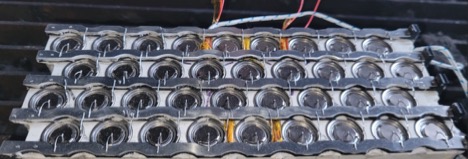
Intumescent Case Module Before Thermal Runaway Test
The modules were fully charged string by string with a CCCV mode up to 4.4V. Before tests, modules were heated at 60°C overnight. Cell heating power during runaway tests was manually adjusted to maintain a 10 °C/min heating rate.
Before each test, both the open circuit voltage (OCV) and temperature were measured. The module temperature dropped ~10-15 degrees (depending on module) to ~44-49°C as result of handling the modules and connecting the wiring.
Table 1. Modules Voltages Before TR Test
Module | String 1 Voltage, V | String 2 Voltage, V | String 2 Voltage, V | String 2 Voltage, V |
ABS | 4.17 | 4.20 | 4.19 | 4.19 |
Intumescent | 4.17 | 4.18 | 4.18 | 4.18 |
Module 1 Results – Injection-Molded ABS Plastic
As the test began, the single cell equipped with a resistive heater was pushed to an onset temperature of 180°C, causing thermal runaway. The recorded temperature at the start of thermal runaway is roughly 30°C higher than a recent study on the thermal stability of nickel-rich/silicon-graphite lithium-ion batteries published in Applied Thermal Engineering by Li, Kong, Liu and Zhao. The cell quickly reached ~400°C before ejecting most of the cell’s internals.
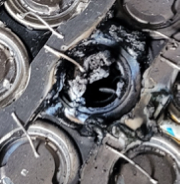
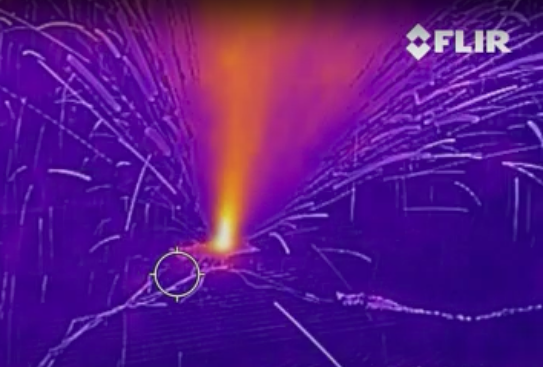
The thermal event did not propagate to other cells, which can be seen from the modest increase in temperature increase from neighboring cells.
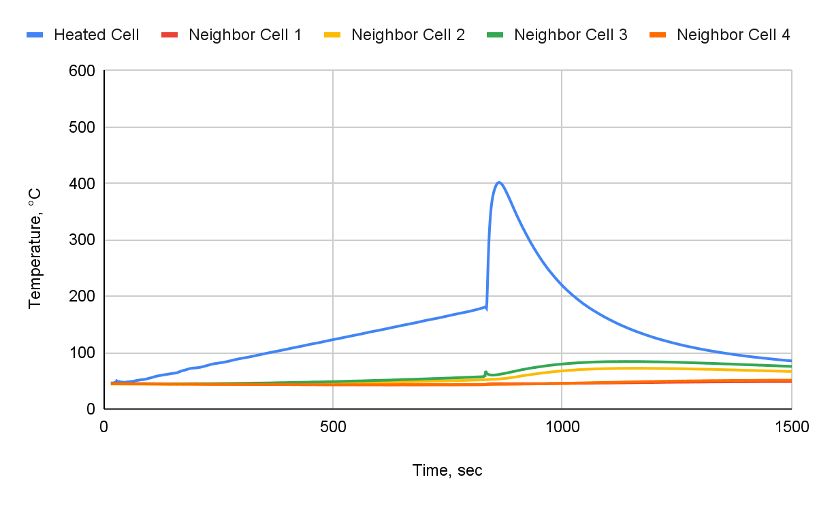
Injection-Molded ABS Module Thermal Runaway Test Temperature Data
Acculon’s analysis suggests that the ejection of the cell’s active materials may have been the root cause of propagation resistance. Further testing is planned.
Module 2 Results – Intumescent Thermoplastic
For the second test, the single cell equipped with a resistive heater was pushed to an onset temperature of 170°C, causing thermal runaway. Again, this onset temperature was higher than the 150°C seen in Li, Kong, Liu and Zhao’s analysis of similar cells. The cell quickly reached approximately 550°C (significantly higher than the temperature achieved during the ABS module test, but lower than similar tests done to high nickel LG 18650 cells) before cooling to just above 100°C, being consistent with the fact that the cell’s active material was not ejected from the cell.
The cell runaway followed a similar pattern as seen with the ABS module, which is to be expected from the high-energy cell chemistry.
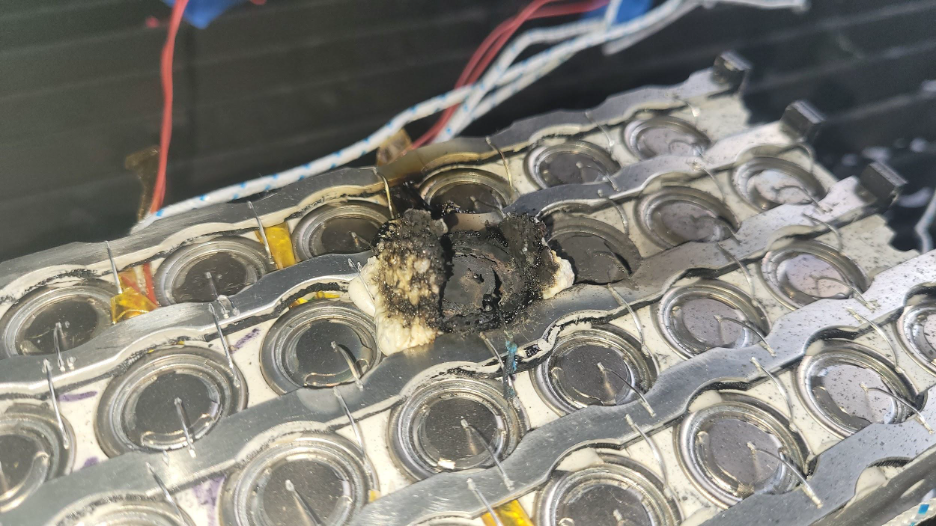
Instrument Module Thermal Runaway Cell Appearance After Test
Acculon reported that the intumescent material absorbed some energy from the event, causing expansion. The maximum temperature of a nearby cell after the thermal event reached 89.5°C, which is far below the temperature at which thermal runaway occurs. Propagation to other cells was not observed.
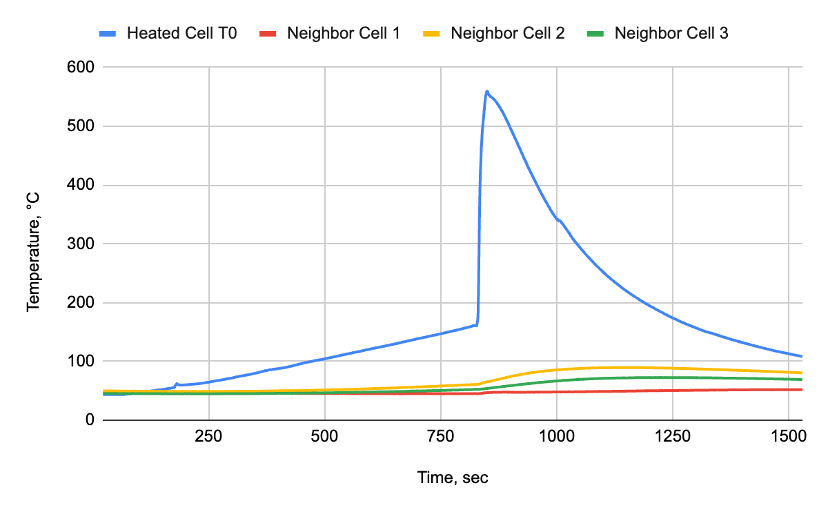
Intumescent Case Module Thermal Runaway Test Temperature Data
Conclusions
As a result of a single-cell, heater-induced thermal runaway, neither of the tested modules showed any propagation, which is a positive outcome for this Forge Nano cell formulation. In the first module test, the Forge Nano cell pushed to thermal runaway hit a max temperature of 400°C, while the second test saw a max temperature of 550°C. This decreased heat generation from Forge Nano cells with Atomic Armor coated materials may be a contributing factor to dispelling propagation in modules. Further investigation is required to draw exact conclusions, which is planned in future module builds.
Forge Nano has improved the performance and durability of a variety of high-energy battery materials since its inception in 2011. To showcase the cell-level improvements of utilizing Forge Nano-enhanced materials, the company builds and tests a variety of cell formulations in-house.
Partnering with Acculon has allowed Forge Nano to expand its safety testing capabilities. We intend to continue our investigation of Atomic Armor coatings, combined with industry standard and next-generation battery pack construction methods, to ensure the utmost safety in cells utilizing Forge Nano technology.
Contact us to get in touch with a Forge Nano representative or to learn more information about our battery solutions.
